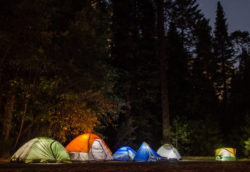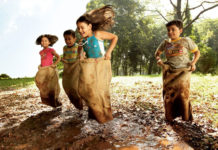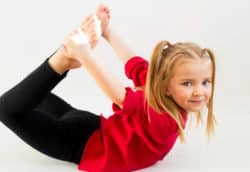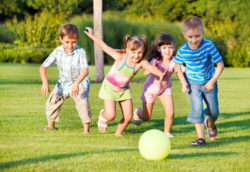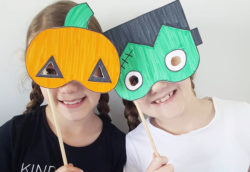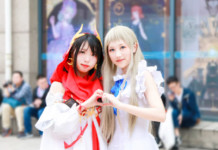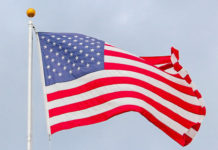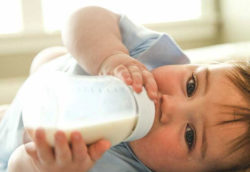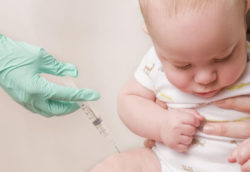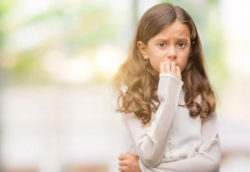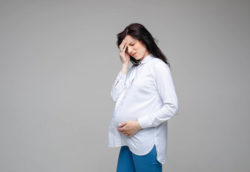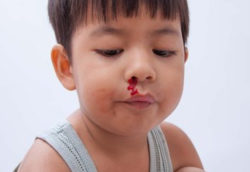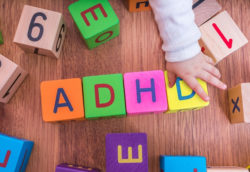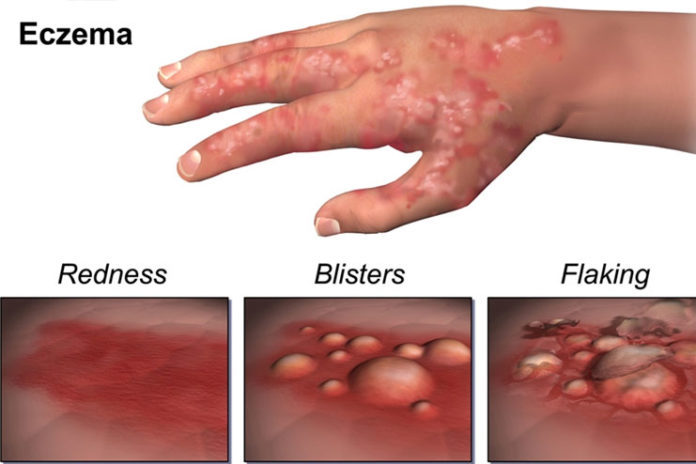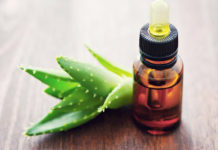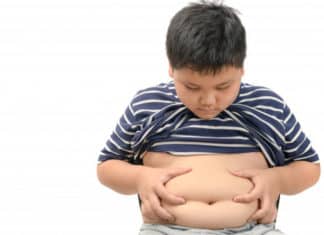Eczema is a common ailment of skin which makes rashes, itchiness and redness. These inflammations of skin can have a multiple reasons. These can have short term impacts or long term impacts too. Eczema rashes mostly occur on baby’s cheek, chest or chin. Eczema can have environmental, genetic or allergic factors. And the symptoms look redness and itchiness to begin with and more swelled or thickened skin for long term.
What is eczema:
 Eczema is a very common skin occurrence in kids as well as adults. The skin gets red, itchy, inflamed, boiled, patched and there are flare ups too. Eczema can be mild, moderate and severe depending upon the kind of skin impacts it has. Eczema goes away on its own when kids grow but it may stay further too.
Eczema is a very common skin occurrence in kids as well as adults. The skin gets red, itchy, inflamed, boiled, patched and there are flare ups too. Eczema can be mild, moderate and severe depending upon the kind of skin impacts it has. Eczema goes away on its own when kids grow but it may stay further too.
Eczema is not contagious and there is no sure shot cause for it. While there are no cure for eczema there are several treatments to ease and comfort.
Eczema symptoms:
Eczema symptoms are different for different people and there may be mild to severe cases for same kind of allergic skin reaction in different people. Eczema can appear anywhere in the body at different times. Most common symptom of eczema is itchiness which is mild to moderate. Some people get so much itch that they scratch the eczema spot which starts bleeding. This is the itch scratch cycle. Some common symptoms of eczema for eczema identification are:
- Red and inflamed skin patches
- 2- Dry and sensitive skin
- 3- Itching and constant urge to scratch
- 4- Dark colored skin patches
- 5- Rough and leathery patches on skin
- 6- swelled up skin
- 7- Crusting on the skin
Treatment for eczema:
While there is no cure for eczema but there are some specialized treatments. No one treatment fits all so there may be some which work good for one kind of eczema and other treatments when you have different kind of eczema. Also their impact changes from climate and health conditions too. Some treatments for eczema are:
1- Over the counter products:
Some ointments and medications which are available over the counter can be bought even without prescription. Some of the OTC treatments moisturize the skin, some help in alleviate the redness and patch. Also these clean the skin to prevent infection from spreading further.
2- Moisturizing the skin well:
When you moisturize the skin well it prevents dry patches on skin thus reduced inflammation and itchiness. Chemicals in soaps and cosmetics can cause the skin triggers to further eczema symptoms. But if you use a thick moisturizer it may help in soothing and relaxing the eczema itch
3- Bathing and keeping the skin clean:
Good hygiene and bathing often helps in reducing the itchiness and inflammations. Soak in warm soothing bath and moisturize well. Use salt, vinegar, bleach or baking soda after consulting your health-care provider, for the elaborate warm and soothing bath to treat the eczema symptoms.
4- Prescription topicals:
Corticosteroids and topical calcineurin inhibitors are prescribed by pediatricians and doctors to reduce the swelling, redness and itchiness at the eczema site on skin.
5- Phototherapy:
A narrow band of Ultraviolet B light is emitted by a special machine which increases Vitamin D production and reduces itchiness, swelling and pain on skin. This also kills the bacterial infection which is triggering the eczema further
6- Biologics and medications:
Biologics use inside out approach to treat dermatitis internally. Genetically engineered proteins derived from human genes are put intravenously targeting parts of immune system which are triggering eczema.
7- Complimentary and alternative therapies:
Plant based oils like coconut oil and olive oil; doing meditation and also yoga can help in treating eczema effectively.
What are the different types of eczema rashes:
There are 8 types of eczema with different rashes and symptoms. These have different triggers and need different treatments based on their strength. These 8 types of eczema rashes include:
1- Atopic eczema:
Atopic eczema is the most common type of eczema and is caused by unusual response of body’s immune system. This causes itchy and inflamed skin. This condition is caused when exposed to triggers and keeps coming and going. This is genetic and runs in family. It affects the people who have asthma and hay fever more. Also people with atopic eczema may have defects of skin where germs get in quickly. Atopic dermatitis occurs more on face, hands, feet and inner elbows also back of the knees
2- Contact eczema:
There are two kinds of contact eczema; irritant contact eczema and allergic contact eczema. This is triggered by chemicals and frequent hand washing also if a person touches allergy causing substance like poison ivy, nickel and cosmetics with hash chemicals. Hands are the most vulnerable to this form of contact eczema. This can be treated only by steroid medicines and moisturizing the skin well.
3- Seborrhoeic eczema:
This is also known as dandruff. It affects the scalp largely and also eyebrows, groin, chest, areas behind ears, sides of nose and more such. This triggers the skin to fall off in flakes. This may be caused by yeast and is difficult to treat in people with immunodeficient disorders like AIDS. The treatments includes shampoos for dandruff containing salicylic acid, zinc, selenium, coal tar and more such. Anti-fungal treatments rubbed on skin and steroid lotions.
4- Nummular or discoid eczema:
Nummular eczema affects men more than women. It is a coin shaped red mark on legs, hips, lower back, back of hands or even forearms. The causes are still unknown but it triggers in cold and dry air, exposure to formaldehyde, metals and nickel. These patches are scaled, itchy and crusted. Its treatments include skin protection, lukewarm bath, steroid ointment on rash, antibiotics and oral medications.
5- Neurodermatitis:
Neurodermatitis is a chronic skin inflammation caused by scratch itch cycle. Women aged 20-,50 are more affected by this, which can be triggered by itchiness after insect or bug bite. This results in scaly patches on legs, forearms, head and wrists. Skin can also get thickened and leathery overtime. Stress worsens their symptoms.
6- Stasis dermatitis:
This eczema develops when veins in legs do not return blood to heart properly. This causes weeping and crusting of skin, and overtime brown stains get developed. Progesssion of this can lead to skin lesions which are oozing, blisters and even ulcers may develop in affected areas. Steroid ointments, creams and lotions, antibiotics, moist compress also compression stockings can be used to treat them.
7- Dyshidrotic eczema:
This kind of eczema develop on skin on palms and skin on soles of feet. These are deep and clear blisters which itch and pain. It is common in spring and summer months in warm climatic conditions. They also result in cracks on hands and fingers overtime. Treatments include wet compress, steroid drugs, Ultraviolet A therapy
8- Eczema herpaticum:
Eczema herpaticum is a serious skin infection caused by herpes simplex virus. This can also cause swollen lymph glands, high fever and shivering. Its is common on face, and can be treated only with antiviral medication.
Eczema cannot be cured but Eczema can be prevented by good hygiene, moisturizing the skin well, bathing in warm water with bleach or baking soda, managing extreme temperature also keeping away from triggers like dust, sand, tight clothes, stress and anxiety.
The above compilation on Symptoms and identification of 8 different types of Eczema rashes is to help parents and caretakers understand the skin infections and take necessary action soon. Eczema is common but may need pediatric intervention for its treatment and prevention from spread further. Eczema identification is important and the treatment can be picked accordingly.
Share ahead and keep writing us, we love hearing from you!

